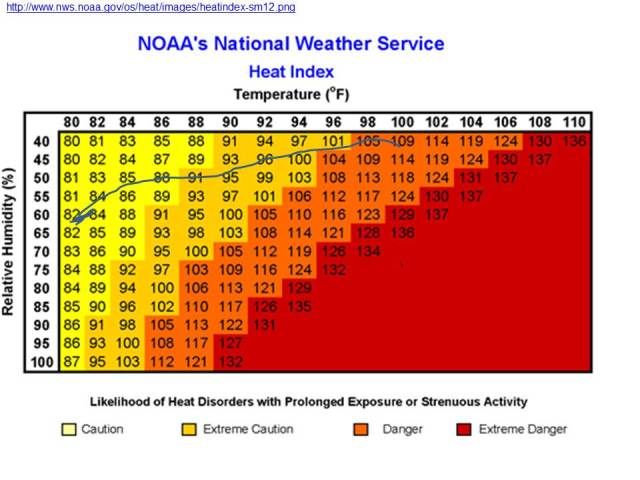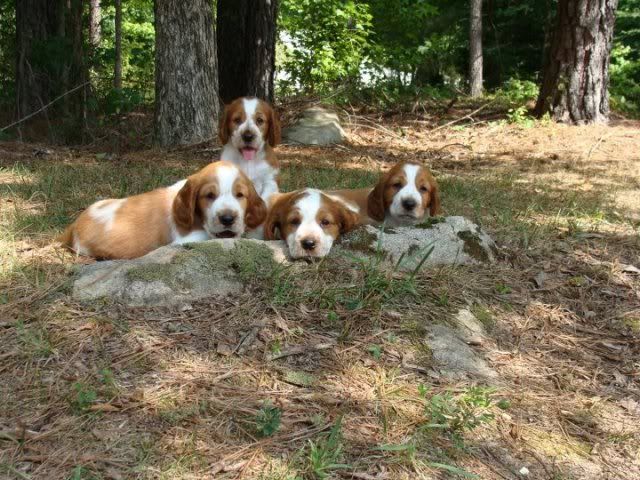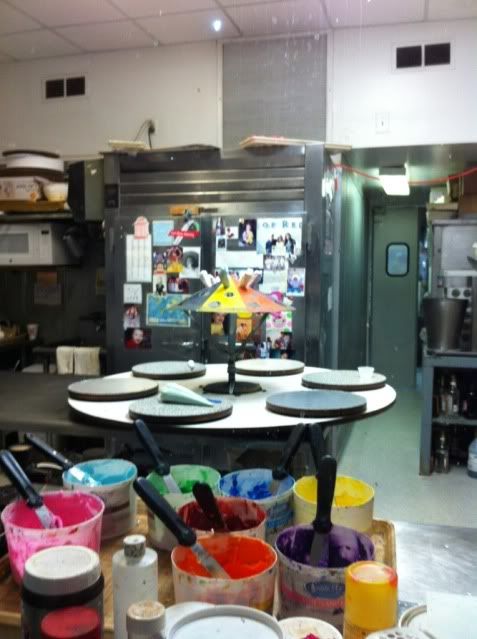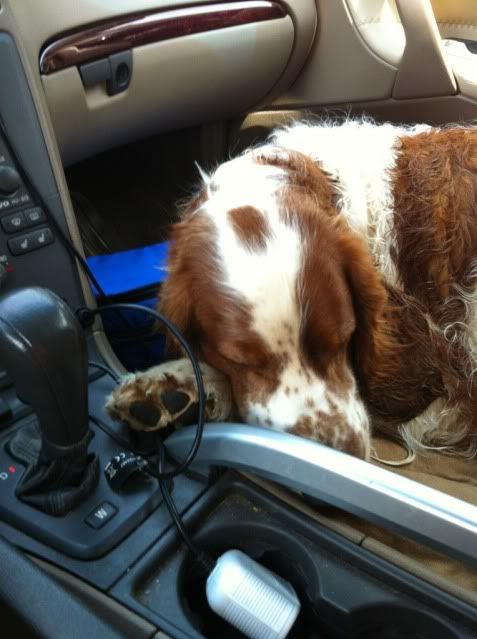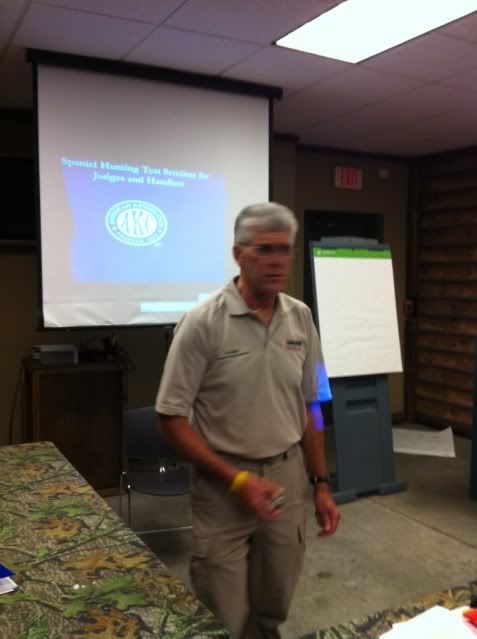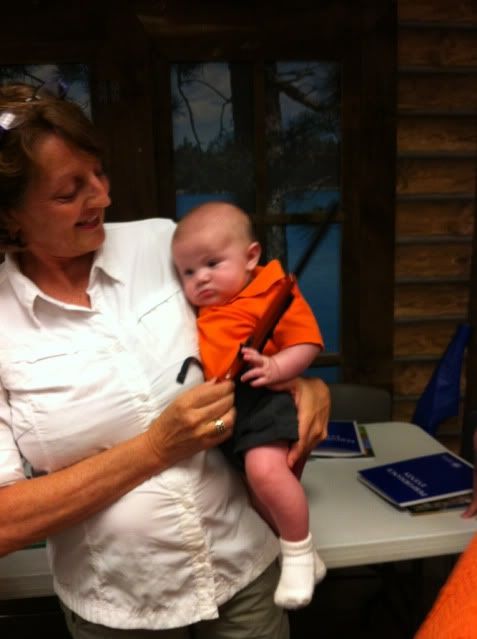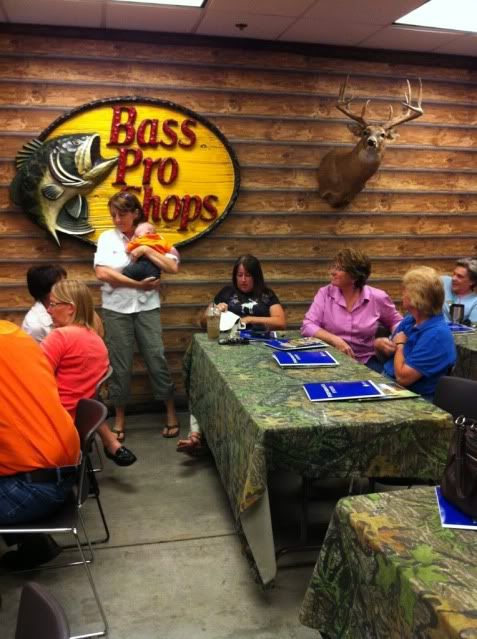Why is consistency so hard to achieve? After all, it is entirely in your hands and not the dog's.
After a fine but hot land practice, Larsen and I went to the water for a hunt dead and a cooling water retrieve.
I set the bird out 60+ yards on the hunt dead and Larsen went right after it. He picked it up and trotted back as fine as you please and then breezed right by me. I pipped him back, which he ignored. I pipped him again. Finally, after this sort of pipsqueaking, he returned with the bird. Can you spot the mistake? What happened to zero tolerance on failure to deliver to hand? Where does the fault entirely reside?
Enough. You know the answers and so do I. The answers do not have embedded in them "but it was hot," "but it was the end of a long day," "but the bird was a bit torn and tastey."
To repair the setback, this week, Larsen has been on the table fetching various objects. Not as punishment, since he really did not much more wrong than simply test me, but as a reminder to both of us that fetch means fetch.
Tuesday, June 26, 2012
Monday, June 25, 2012
Hot weekend
Larsen preferred the cool house to the warm porch on this first weekend of summer, but he also wanted to keep tabs on all of the action.
First flush
Larsen had his first find/flush. He did ok twice and broke twice, but even in the breaking we got him back under control.
The setup was very controlled. Cathy put a flag in the field, and I placed a bird right on the flag. The field had its summer cut so we were able to watch as the bird got its bearings and in some instances strolled around the grounds a bit. I quartered Larsen, and because neither Cathy nor I were rolling the birds in, Larsen had less reason to hang around our feet. He quartered ok, but not terribly crisply and I probably hit the whistle more than I should. I tried to make sure that I was right on top of the dog and the bird when Larsen flushed so that I could whistle him to a sit. Cathy too was letting him have it in her demure southern way at the top of her lungs. Larsen sat as the bird flew.
Larsen was not steady to the gun. When Shoni took a shot, the dog took off. We were able to get him back before he got the bird, but he certainly was not steady by any means.
It was rough, it was ragged, but it was a start. Larsen understood that he had to sit to the flush, and he did so at times in a somewhat controlled environment. It was a setup, sure, but it was still dogs, birds, and guns all coming in at once.
The big dogs, Humphrey and Zelda, were out for tuneups. Zelda had her now-familiar flush and retrieve on a nice crossing shot by Shoni. Humphrey had to content himself with nice work on fly-offs, since the birds were tracking low on Shoni's lee side, giving her no opportunity for a shot.
Man, it was a hot morning. We got the dogs out to short turns and iced them down, even though they seemed ok (tongues hanging from front of mouth and not from side).
The setup was very controlled. Cathy put a flag in the field, and I placed a bird right on the flag. The field had its summer cut so we were able to watch as the bird got its bearings and in some instances strolled around the grounds a bit. I quartered Larsen, and because neither Cathy nor I were rolling the birds in, Larsen had less reason to hang around our feet. He quartered ok, but not terribly crisply and I probably hit the whistle more than I should. I tried to make sure that I was right on top of the dog and the bird when Larsen flushed so that I could whistle him to a sit. Cathy too was letting him have it in her demure southern way at the top of her lungs. Larsen sat as the bird flew.
Larsen was not steady to the gun. When Shoni took a shot, the dog took off. We were able to get him back before he got the bird, but he certainly was not steady by any means.
It was rough, it was ragged, but it was a start. Larsen understood that he had to sit to the flush, and he did so at times in a somewhat controlled environment. It was a setup, sure, but it was still dogs, birds, and guns all coming in at once.
The big dogs, Humphrey and Zelda, were out for tuneups. Zelda had her now-familiar flush and retrieve on a nice crossing shot by Shoni. Humphrey had to content himself with nice work on fly-offs, since the birds were tracking low on Shoni's lee side, giving her no opportunity for a shot.
Man, it was a hot morning. We got the dogs out to short turns and iced them down, even though they seemed ok (tongues hanging from front of mouth and not from side).
Friday, June 22, 2012
Training in the hot summer
We've arrived at the summer solstice - - the longest day of the year. From now on, the shadows will start to lengthen, but the average daily temperatures will continue to increase since they follow with a lag. Training days will be hot and vigilance will be needed to protect the dogs in their exertions.
The rule of 140 (temperature + relative humidity) is sometimes cited as an indicator of danger for exercising dogs. I'm not sure if there is a better rule out there, and maybe the rule of 140 serves simply as a reminder. In the south, it is easy to get to 140 (70 degrees, 70% humidity) before dawn. Ice, water, fans are all necessary training tools. An early start and finish are helpful. It can be sticky humid in the grass for the dogs.
And, when the dogs come off the field, stake them out. Don't kennel them until they have a chance to cool down in the grass and breeze. That battery-powered Ryobi fan and a stake-out cable in the cool shade should do it.
Below I traced the rule of 140 onto NOAA's Heat Index just to see if there was any basis for the rule. Too bad NOAA's Heat Index does not continue down to 50 degrees, the temperature above which heat is a consideration for an active dog. The rule of 140 does not track neatly with the heat index, since the Heat Index ranges from 82 to 109! Why would that be? Shouldn't the rule of 140 and/or the Heat Index express the BTUs in the atmosphere at different temperature/humidity combinations?
We've often run the dogs in the Heat Index range of the upper 80's and low 90's. The Mazomanie, WI Hunt Test last July was probably in the mid 90's F and 70% humidity. The dogs were kept to short turns. In our training, we keep the turns short, and have plenty of water & ice.
The rule of 140 (temperature + relative humidity) is sometimes cited as an indicator of danger for exercising dogs. I'm not sure if there is a better rule out there, and maybe the rule of 140 serves simply as a reminder. In the south, it is easy to get to 140 (70 degrees, 70% humidity) before dawn. Ice, water, fans are all necessary training tools. An early start and finish are helpful. It can be sticky humid in the grass for the dogs.
And, when the dogs come off the field, stake them out. Don't kennel them until they have a chance to cool down in the grass and breeze. That battery-powered Ryobi fan and a stake-out cable in the cool shade should do it.
Below I traced the rule of 140 onto NOAA's Heat Index just to see if there was any basis for the rule. Too bad NOAA's Heat Index does not continue down to 50 degrees, the temperature above which heat is a consideration for an active dog. The rule of 140 does not track neatly with the heat index, since the Heat Index ranges from 82 to 109! Why would that be? Shouldn't the rule of 140 and/or the Heat Index express the BTUs in the atmosphere at different temperature/humidity combinations?
We've often run the dogs in the Heat Index range of the upper 80's and low 90's. The Mazomanie, WI Hunt Test last July was probably in the mid 90's F and 70% humidity. The dogs were kept to short turns. In our training, we keep the turns short, and have plenty of water & ice.
Monday, June 18, 2012
Sunday practice
Cathy (Humphrey, Zelda) and I (Larsen) met with Shoni at Danny's Circle W at around 7:00 am. We practiced at the east field (or what I call the "master" field since we've sometimes held the MH events there). The west field has already gotten its summer cut and has no cover.
Here's where we are with Larsen.
Larsen had some self-hunting going on and I had to correct him using the e-collar to pull him back in. His sitting while I visited with Shoni and Cathy was very good. In fact, in one flush situation, he remained sitting despite keening and sometimes lifting a front pay in order to get permission to get a flown-off bird. He came to me when I pipped him in. So we are making real progress.
His delivery to hand on the hunt deads was perfect, and I loved him for it. His delivery from the water, less so. When he laid the bird down to shake, I gave him one set of pips to bring it in. If he did not pick up the bird and bring it to me, I stepped up, grabbed him under the chin, and pulled him to me while pipping. There now is a zero tolerance for sloppy handling. I have to consistently and every time give him some nice (but not gushy) praise for a job well done, and a firm correction for sloppy work.
Humphrey and Zelda are hunting at a master level. Cathy is pleased, and she has reason to be. Humphrey has a relaxed, confident roll to his shoulders as he quarters. He is fetching quail, and while he might rough up the delicate bird to some extent, these morsels definitely are table-ready and not overly-mouthed. That's a tall order for Humphrey, and he has come a long way from last year's confusion. I think his softer mouth is a reflection of his growing confidence.
Zelda had a beautiful flush & retrieve on the last land work of the day (before heading off to hunt dead and water). It was on a tough shot that Shoni hit, just a sliver of blue under the bird. The shot and perfect hup and retrieve ended that part of the practice on a high note.
Like Larsen, Zelda did a little tomfoolery with the bird on the water retrieve. It is a temptation to the dog to start playing with a nice, smelly, wet bird, but, like Larsen, she got caught up short for her troubles in the new no-nonsense attitude that Cathy and I have adopted.
Here's where we are with Larsen.
- He has the components. He will sit and let a bird get tossed or even fly and flutter about. He will come to the whistle, but not every time. His obedience radius is approximately 20 yards. Outside of that, his obedience factor drops with the square of the distance.
- Larsen has not put the components together. I don't think he would find, flush, and sit to wing & shot. I think if he were in the heat of the hunt, he would go for the bird: my whistle a distant sound from another world.
Larsen had some self-hunting going on and I had to correct him using the e-collar to pull him back in. His sitting while I visited with Shoni and Cathy was very good. In fact, in one flush situation, he remained sitting despite keening and sometimes lifting a front pay in order to get permission to get a flown-off bird. He came to me when I pipped him in. So we are making real progress.
His delivery to hand on the hunt deads was perfect, and I loved him for it. His delivery from the water, less so. When he laid the bird down to shake, I gave him one set of pips to bring it in. If he did not pick up the bird and bring it to me, I stepped up, grabbed him under the chin, and pulled him to me while pipping. There now is a zero tolerance for sloppy handling. I have to consistently and every time give him some nice (but not gushy) praise for a job well done, and a firm correction for sloppy work.
Humphrey and Zelda are hunting at a master level. Cathy is pleased, and she has reason to be. Humphrey has a relaxed, confident roll to his shoulders as he quarters. He is fetching quail, and while he might rough up the delicate bird to some extent, these morsels definitely are table-ready and not overly-mouthed. That's a tall order for Humphrey, and he has come a long way from last year's confusion. I think his softer mouth is a reflection of his growing confidence.
Zelda had a beautiful flush & retrieve on the last land work of the day (before heading off to hunt dead and water). It was on a tough shot that Shoni hit, just a sliver of blue under the bird. The shot and perfect hup and retrieve ended that part of the practice on a high note.
Like Larsen, Zelda did a little tomfoolery with the bird on the water retrieve. It is a temptation to the dog to start playing with a nice, smelly, wet bird, but, like Larsen, she got caught up short for her troubles in the new no-nonsense attitude that Cathy and I have adopted.
Thursday, June 14, 2012
Wednesday, June 13, 2012
New trestle
It's not every day that the Purple Line EL in Chicago gets a new train trestle. In fact, the existing trestle is the original, which was laid in 1895.
The new trestle pictured below is a brute, and looks like it will carry the clattering train cars for another century or more. The trestle is propped up on stilts in the middle of Grove Street at Chicago Avenue in Evanston. They've been doing some last-minute touch ups of some sort for a number of weeks now. Then they will cut away the old trestle and swing the new one into its place.
The trestles are getting replaced at a number of EL stops, and it is a cause for excitement. Locals bring out their lawn chairs and coolers when the crane arrives to swing the monsters into their new homes.
The Metra trestle looks like it is held together by canvas.
This EL trestle has seen some harsh Chicago winters.
The new trestle looks good for another 100 years.
The new trestle pictured below is a brute, and looks like it will carry the clattering train cars for another century or more. The trestle is propped up on stilts in the middle of Grove Street at Chicago Avenue in Evanston. They've been doing some last-minute touch ups of some sort for a number of weeks now. Then they will cut away the old trestle and swing the new one into its place.
The trestles are getting replaced at a number of EL stops, and it is a cause for excitement. Locals bring out their lawn chairs and coolers when the crane arrives to swing the monsters into their new homes.
The Metra trestle looks like it is held together by canvas.
This EL trestle has seen some harsh Chicago winters.
The new trestle looks good for another 100 years.
Monday, June 11, 2012
Sunday, June 10, 2012
The icing on the cake
Benneson's bakery, closed for the night, with a pallet of frosting. Lazy Susans for turning cakes are on the table in the middle-ground.
Thursday, June 7, 2012
Judge's seminar
Hunt Test judges are required to participate in an AKC-sponsored seminar every five years. I participated in the 2012 seminar partly to learn what judges look for in a dog and partly with a mind to become a judge--but I'm getting far ahead of myself.
The participants were primarily the spaniel gang, with a flat-coat thrown in for measure. AKC's Tom Meyer presented, and there was a lively give-and-take from the attendees who knew Tom and each other quite well and have shared many good dog stories over the years.
The primary purpose of the seminar, in my view, is to bring some measure of consistency to judging. As the AKC rules state, judging should neither be so lax as to make it pointless, nor so severe as to discourage participants.
We discussed some interesting topics:
AKC's Tom Meyer led the seminar.
Mary Thoroman takes note.
Aunt Susan plays with little Greer, who was attending his first Judges' Seminar.
Susan won't let go of Greer.
Just like the dogs themselves, it's not easy getting spaniel owners to settle down.
The participants were primarily the spaniel gang, with a flat-coat thrown in for measure. AKC's Tom Meyer presented, and there was a lively give-and-take from the attendees who knew Tom and each other quite well and have shared many good dog stories over the years.
The primary purpose of the seminar, in my view, is to bring some measure of consistency to judging. As the AKC rules state, judging should neither be so lax as to make it pointless, nor so severe as to discourage participants.
We discussed some interesting topics:
- Training. Training is not permitted on the grounds. What is training? What are the grounds?
- Collar. Flat buckle only.
- Course. Shall be of a size that permits the dog to hunt naturally.
- Water. The dog must swim the water in the blind, but it is ok if the dog returns on land (circumnavigating a round farm pond, for example).
- Guns. Safety is paramount. Only break-open guns allowed. Blaze is required. A blaze cap is not sufficient.
- Mechanical Vehicles. "Should" be kept off the course. Should does not mean must.
- Birds. Should not be placed in holes, or in cover that would "impede" their ability to fly or run.
- Judging. In the event of a disagreement, a dog cannot receive a qualifying score.
AKC's Tom Meyer led the seminar.
Mary Thoroman takes note.
Aunt Susan plays with little Greer, who was attending his first Judges' Seminar.
Susan won't let go of Greer.
Just like the dogs themselves, it's not easy getting spaniel owners to settle down.
Subscribe to:
Comments (Atom)



